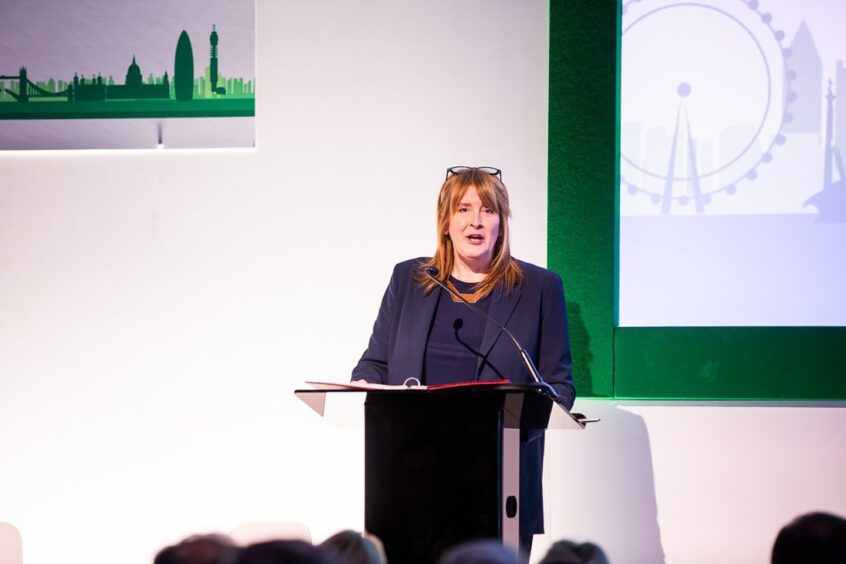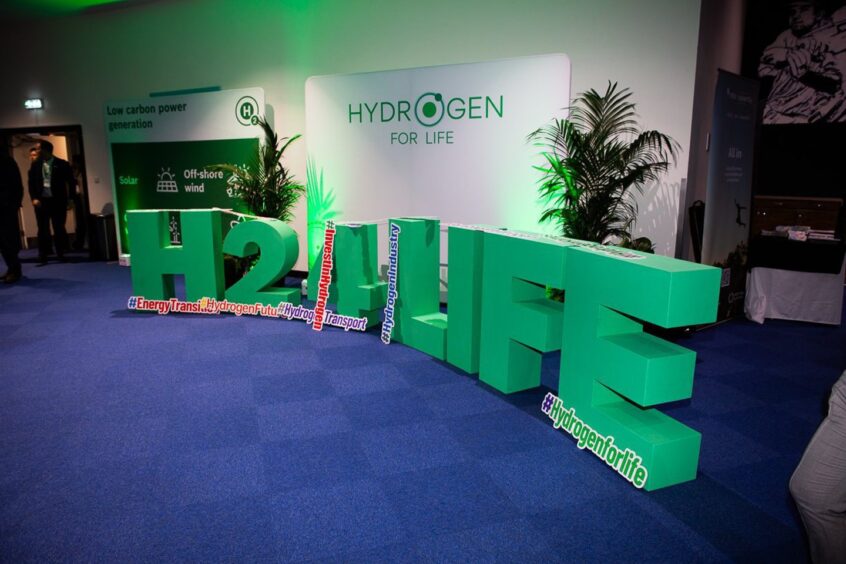
Industry minister Sarah Jones has described the nascent hydrogen market as a £7 billion annual opportunity for British businesses.
“We have one of the most attractive business environments around; we have a cutting-edge hydrogen sector,” she told business delegates at a recent hydrogen-focused event in London
“We have a whole range of programmes and investment funds ready to support you; so, let’s work together to harness these strengths and make the UK a genuine global leader in hydrogen, as we build a cleaner, more secure, more prosperous future.”
She said the government is keen to help businesses unlock opportunities in the “international market” for hydrogen, a low-carbon source of fuel and electricity, indicating that the UK will build on its existing partnership with Germany to develop the fledgling industry.
“We’ve been working proactively with partners to shape further the global markets’ rules and standards while promoting the role of UK industry within that,” Jones said at last week’s Hydrogen for Life event at the Oval.
The UK government signed a partnership last year with Germany to advance innovation and accelerate the deployment of hydrogen projects; that cooperation “will be continuing”, the minister said.
A German government official also recently spoke of the importance the world’s third largest economy is placing on a potential hydrogen partnership with Scotland.
The UK hydrogen market will depend on the development of crucial pipeline infrastructure to accommodate transporting hydrogen as a fuel.
Germany is seeking to overhaul its pipeline infrastructure to create a hydrogen network by 2032, with similar smaller-scale developments in the US, and plans to build out UK infrastructure at industrial clusters this decade.
Gas distribution network operator Cadent closed a consultation this week on developing hydrogen pipelines in North Wales as part of the low-carbon cluster Hynet around EET Fuel’s Stanlow Manufacturing Complex in Ellesmere Port.
Norwegian energy company Equinor, Centrica PLC and SSE are also planning further critical infrastructure, which is in the pre-feasibility stage, including a 28-mile hydrogen pipeline across the Humber.
Funding ‘by winter’
Companies are waiting for crucial government funding to be finalised before making commitments or signing contracts for the promised hydrogen clusters.
French state-owned energy company EDF Group’s subsidiary Hynamics is one of those who are waiting before making final investment decisions (FIDs) for the Tees Valley low-carbon hydrogen project, chief executive Pierre de Raphelis-Soissan told Energy Voice.
“We are now desperate to get to the final stage of contracting issue, which will allow us then to finalise all the necessary requirements to go to the final investment decision,” he said.
The minister outlined the “direction of travel” for the sector following the government’s recent £2bn hydrogen allocation round (HAR1) ahead of the “big push” of the Spring spending review.
“I’m really keen to get this market update to everybody by winter, which will set the direction of travel,” Jones said.
“We’ve then got the spending review, which is obviously the big push that we’re working towards and we are completely committed to the CCUS [carbon, capture, use and storage] track two, to HAR2. We need to get those through the process of the spending review.”
British Gas-owner Centrica also plans to invest £2bn to convert the Rough gas storage facility, which was reopened from dormancy during the energy crisis, into a facility capable of storing hydrogen.
Chris O’Shea, group chief executive of Centrica, said: “All we need now is the green light from regulators and the government to unlock £2bn of investment to transform our existing Rough storage facility to become the world’s biggest hydrogen storage facility and start building out the energy system of the future.”
‘Much bigger’
FTSE250-listed cleantech company Ceres Power’s chief executive Phil Caldwell told Energy Voice that the energy transition will cost less than businesses expect and represents an even greater opportunity than outlined by the minister.
“People talk a lot about the cost of the energy transition, but many countries, many companies, see it as a huge opportunity,” he said, speaking on the sidelines of the event.
“You just heard the minister talking. She said 30,000 jobs and £7bn in value by 2030. I think it’s much greater than that. That’s just the UK, not globally.”
Caldwell said the opportunity to develop a global hydrogen market is “much, much bigger” than the figure indicated by Jones, with forecasts by Deloitte indicating the market could grow to as much as $1.4 trillion (£1.1tn) by 2050.
“At least 50% of that is for industrial decarbonisation and that’s really where the service technology has a big advantage,” Caldwell said.
“We’re pretty confident we’re addressing an 8 billion person problem, and a huge market opportunity. If we don’t decarbonise, it’s everybody’s problem.”
Cheaper bills
A report launched by FTI Consulting and Centrica has suggested that the proposed large-scale hydrogen storage facility at the Rough gas field in Yorkshire would reduce energy bills by £1bn a year by 2050.
Energy bills are expected to continue to rise this winter, after energy regulator Ofgem increased the price ceiling on energy prices by 1.2%, which will come into force in early 2025, exacerbating the loss of winter fuel payments.
The report released by the energy supplier said the storage facility would help with power intermittency and lowering energy bills as the country relies increasingly on renewable power.
It estimates that power generation from renewables could rise or fall by as much as 100 GW over the course of a single day, highlighting the need for energy storage.
Renewables are taking a much greater share of the UK electricity supply, comprising nearly half of electricity on the UK grid this month.
Hydrogen storage works by converting excess electricity to hydrogen using electrolysers when there are peaks. That stored power is then converted back to electricity when availability is scarce.
The Rough gas field, which was reopened following Ukraine’s war on Russia, could share infrastructure installed at the Humber hydrogen hub, according to a Centrica spokesperson.
Centrica’s spokesperson told Energy Voice that the hub’s project partners including SSE and Equinor are in the pre-feasibility stage of designing a hydrogen transmission system that can store and supply hydrogen.
That critical pipeline infrastructure “could be ready in the same time frames as RougH2”, the spokesperson said.
Those pipelines would link hydrogen terminal H2H Easington to the H2H Saltend hydrogen production facility being developed by Equinor and the hydrogen storage facility it is developing at Aldbrough with SSE Thermal.

 © Supplied by Bosch
© Supplied by Bosch © Supplied by Bosch
© Supplied by Bosch © Supplied by Bosch
© Supplied by Bosch